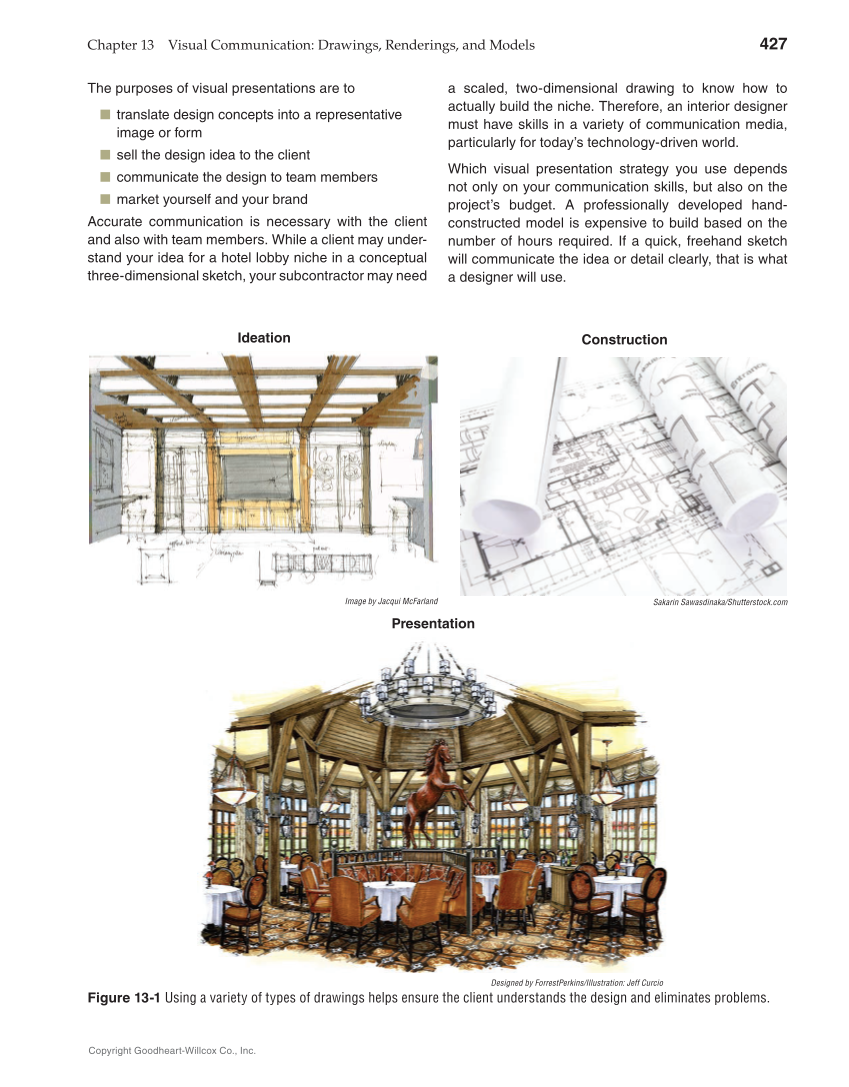Chapter 13 Visual Communication: Drawings, Renderings, and Models 427 Copyright Goodheart-Willcox Co., Inc. The purposes of visual presentations are to ■ translate design concepts into a representative image or form ■ sell the design idea to the client ■ communicate the design to team members ■ market yourself and your brand Accurate communication is necessary with the client and also with team members. While a client may under- stand your idea for a hotel lobby niche in a conceptual three-dimensional sketch, your subcontractor may need a scaled, two-dimensional drawing to know how to actually build the niche. Therefore, an interior designer must have skills in a variety of communication media, particularly for today’s technology-driven world. Which visual presentation strategy you use depends not only on your communication skills, but also on the project’s budget. A professionally developed hand- constructed model is expensive to build based on the number of hours required. If a quick, freehand sketch will communicate the idea or detail clearly, that is what a designer will use. Ideation Construction Presentation Designed by ForrestPerkins/Illustration: Jeff Curcio Figure 13-1 Using a variety of types of drawings helps ensure the client understands the design and eliminates problems. Image by Jacqui McFarland Sakarin Sawasdinaka/Shutterstock.com
